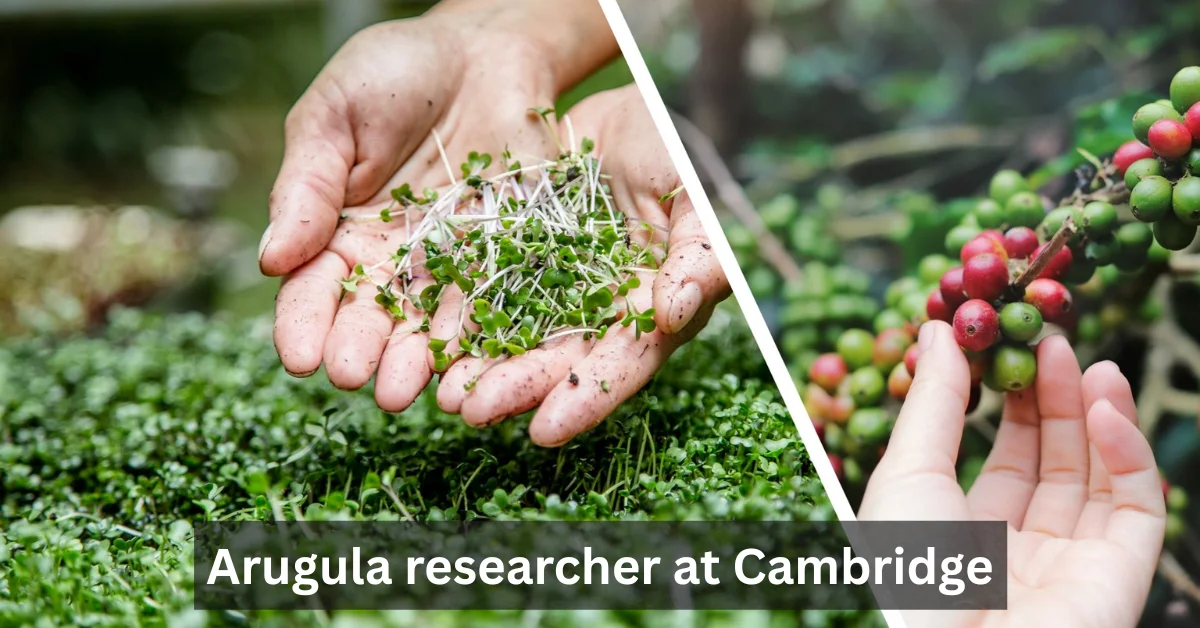Introduction: The Cambridge Advantage
Cambridge University’s long-standing reputation for scientific excellence extends to the field of agricultural and nutritional research. When you think of an arugula researcher at Cambridge, picture a world-class scientist at the intersection of plant biology, sustainable food systems, and public health. These researchers work not only in the lab but also in the greenhouse, field, and kitchen, unraveling mysteries that turn a humble leafy green into a global superfood.
The Unique Global Role of Arugula
Arugula (Eruca sativa) may seem like a simple salad ingredient, but its impact is surprisingly broad. Known for its spicy flavor and rapid growth, arugula is part of culinary traditions across Europe, the Middle East, and the Americas. The arugula researcher at Cambridge sees this plant as a gateway to addressing some of the world’s most pressing challenges—climate resilience, food security, and population health.
Pioneering Scientific Methods and Technologies
Cambridge arugula researchers employ an impressive toolkit of scientific methods:
-
Genomic Sequencing: Using advanced DNA analysis, they identify genes responsible for disease resistance, flavor compounds, and nutrient content.
-
CRISPR and Gene Editing: With cutting-edge gene editing, they accelerate the development of hardier and more nutritious arugula varieties.
-
Field Trials and Controlled Environments: Experiments in both open fields and climate-controlled greenhouses allow researchers to test new varieties under real-world and extreme conditions.
-
Metabolomics and Bioinformatics: By studying the chemical profile of arugula leaves, researchers map out health-promoting compounds and track how these change with soil, weather, or growing methods.
These approaches generate data that not only improve arugula but also inform breeding programs for other leafy greens worldwide.
Collaboration: From Local Farms to Global Networks
The arugula researcher at Cambridge does not work in isolation. Collaboration sits at the heart of every discovery:
-
Local Farmers: Cambridge scientists partner with regional farmers to test sustainable growing techniques, reduce pesticide use, and improve yields.
-
International Consortia: They join global research networks, sharing findings with plant scientists in Italy, Israel, the US, and Africa—places where arugula is grown and eaten daily.
-
Industry and Startups: Cambridge’s strong ties to agri-tech startups and food companies ensure that scientific breakthroughs translate quickly into products and practical solutions.
-
Culinary Innovators: Chefs, nutritionists, and even food stylists consult with Cambridge researchers to maximize arugula’s flavor, appearance, and nutritional benefits on the plate.
Real-World Impact: From Lab Discoveries to Family Meals
Thanks to the work of the arugula researcher at Cambridge, you might soon enjoy:
-
New Arugula Varieties: Leaves that stay fresh longer, have unique color patterns, or offer a bolder flavor profile.
-
Better Nutrition: Higher concentrations of vitamin K, antioxidants, and plant polyphenols that support heart and immune health.
-
Greater Food Security: Arugula that thrives in drought-prone regions, helping communities grow nutritious food even in challenging climates.
-
Reduced Food Waste: Varieties with improved shelf life mean less spoilage from farm to table.
Restaurants, supermarkets, and home gardeners alike benefit from these practical outcomes.
Education, Public Engagement, and Policy Influence
Education forms a central pillar of the Cambridge mission. The arugula researcher at Cambridge:
-
Lectures at university and community events, bringing the excitement of plant science to audiences of all ages.
-
Creates open-access guides and classroom kits so teachers and students can grow and study arugula hands-on.
-
Advises policymakers on nutrition, sustainability, and food justice, ensuring scientific findings shape public policy for healthier societies.
The Personal Passion Behind the Research
What drives an arugula researcher at Cambridge? Often, it is a blend of scientific curiosity and deep personal commitment to global change. Many researchers recall being inspired by home gardens, traditional recipes, or food insecurity in their communities. Their passion infuses every experiment, from the tiniest seedling in a petri dish to the largest field trials.
Future Trends: What’s Next for Arugula Science?
Looking forward, Cambridge scientists have big plans:
-
Precision Agriculture: Combining satellite imagery, AI, and robotics to fine-tune water, light, and nutrient delivery for each plant.
-
Climate Change Solutions: Breeding arugula that adapts to extreme weather—protecting food supplies in a warming world.
-
Functional Foods: Developing arugula with enhanced medicinal properties, such as anti-inflammatory or anti-cancer compounds.
-
Citizen Science: Launching projects where home gardeners around the world contribute data and feedback on new arugula varieties.
Frequently Asked Questions About the arugula researcher at Cambridge
Can I visit Cambridge and see this research in action?
The university regularly hosts open days, farm tours, and public lectures where visitors can meet scientists and tour research facilities.
How do Cambridge breakthroughs reach farmers and consumers?
Findings move rapidly through collaborations with seed companies, farmer cooperatives, and public outreach, making new varieties and growing methods widely accessible.
Is this research relevant to home gardeners?
Absolutely! Many Cambridge-pioneered methods—such as soil health practices or organic pest management—are now standard for home and community gardens.
Conclusion
The work of the arugula researcher at Cambridge proves that even a humble leafy green can transform agriculture, nutrition, and environmental health on a global scale. Through tireless innovation, collaboration, and public engagement, these scientists ensure that arugula will continue to surprise, nourish, and inspire for generations to come.
